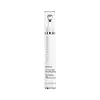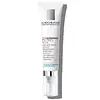What's inside
What's inside
 Key Ingredients
Key Ingredients

 Benefits
Benefits

 Concerns
Concerns

 Ingredients Side-by-side
Ingredients Side-by-side

Water
Skin ConditioningSqualane
EmollientSaccharomyces Ferment
Skin ConditioningMethylpropanediol
SolventGlyceryl Stearate Citrate
EmollientPropanediol
SolventPhosphate Buffered Saline
SolventPropylene Glycol
HumectantGlycerin
HumectantPolyglyceryl-3 Stearate
EmulsifyingButyrospermum Parkii Butter
Skin ConditioningCetearyl Alcohol
EmollientCI 77891
Cosmetic ColorantHydrogenated Lecithin
EmulsifyingStearyl Heptanoate
EmollientStearyl Alcohol
EmollientMica
Cosmetic ColorantButyrospermum Parkii Butter Unsaponifiables
Skin ConditioningHydroxyethyl Acrylate/Sodium Acryloyldimethyl Taurate Copolymer
Emulsion StabilisingEthylhexylglycerin
Skin ConditioningStearyl Caprylate
EmollientAcrylates/C10-30 Alkyl Acrylate Crosspolymer
Emulsion StabilisingCellulose
AbsorbentAesculus Hippocastanum Seed Extract
Skin ConditioningCaprylhydroxamic Acid
Disodium EDTA
Sodium Hydroxide
BufferingO-Cymen-5-Ol
AntimicrobialPEG-8
HumectantHydrogenated Palm Kernel Glycerides
EmollientHamamelis Virginiana Leaf Extract
Skin ConditioningTin Oxide
AbrasiveCI 77492
Cosmetic ColorantSodium Hyaluronate
HumectantTocopherol
AntioxidantDisodium Acetyl Glucosamine Phosphate
Skin ConditioningPolyquaternium-51
Skin ConditioningSodium Hyaluronate Crosspolymer-2
HumectantPolysorbate 60
EmulsifyingSorbitan Isostearate
EmulsifyingHydrogenated Palm Glycerides
EmollientPotassium Sorbate
PreservativeCI 77491
Cosmetic ColorantAlteromonas Ferment Extract
Skin ConditioningPhenethyl Alcohol
MaskingAscorbyl Palmitate
AntioxidantAscorbic Acid
AntioxidantCitric Acid
BufferingGlutathione
Pyridoxine Hcl
Skin ConditioningThioctic Acid
AntioxidantAcetyl Cysteine
AntioxidantLysine Hcl
Skin ConditioningValine
MaskingIsoleucine
Skin ConditioningLeucine
Skin ConditioningThreonine
Arginine
MaskingGlycine
BufferingZinc Acetate
AntimicrobialProline
Skin ConditioningCopper Sulfate
Skin ConditioningWater, Squalane, Saccharomyces Ferment, Methylpropanediol, Glyceryl Stearate Citrate, Propanediol, Phosphate Buffered Saline, Propylene Glycol, Glycerin, Polyglyceryl-3 Stearate, Butyrospermum Parkii Butter, Cetearyl Alcohol, CI 77891, Hydrogenated Lecithin, Stearyl Heptanoate, Stearyl Alcohol, Mica, Butyrospermum Parkii Butter Unsaponifiables, Hydroxyethyl Acrylate/Sodium Acryloyldimethyl Taurate Copolymer, Ethylhexylglycerin, Stearyl Caprylate, Acrylates/C10-30 Alkyl Acrylate Crosspolymer, Cellulose, Aesculus Hippocastanum Seed Extract, Caprylhydroxamic Acid, Disodium EDTA, Sodium Hydroxide, O-Cymen-5-Ol, PEG-8, Hydrogenated Palm Kernel Glycerides, Hamamelis Virginiana Leaf Extract, Tin Oxide, CI 77492, Sodium Hyaluronate, Tocopherol, Disodium Acetyl Glucosamine Phosphate, Polyquaternium-51, Sodium Hyaluronate Crosspolymer-2, Polysorbate 60, Sorbitan Isostearate, Hydrogenated Palm Glycerides, Potassium Sorbate, CI 77491, Alteromonas Ferment Extract, Phenethyl Alcohol, Ascorbyl Palmitate, Ascorbic Acid, Citric Acid, Glutathione, Pyridoxine Hcl, Thioctic Acid, Acetyl Cysteine, Lysine Hcl, Valine, Isoleucine, Leucine, Threonine, Arginine, Glycine, Zinc Acetate, Proline, Copper Sulfate
Water
Skin ConditioningIsocetyl Stearate
EmollientGlycerin
HumectantOctyldodecanol
EmollientPropylene Glycol
HumectantPentylene Glycol
Skin ConditioningDimethicone
EmollientAcrylamide/Sodium Acryloyldimethyltaurate Copolymer
Emulsion StabilisingCetearyl Alcohol
EmollientDimethicone/Vinyl Dimethicone Crosspolymer
Skin ConditioningCaffeine
Skin ConditioningIsohexadecane
EmollientSodium Hyaluronate
HumectantSodium Hydroxide
BufferingRetinol
Skin ConditioningRetinyl Linoleate
Skin ConditioningAdenosine
Skin ConditioningAmmonium Polyacryloyldimethyl Taurate
Emulsion StabilisingCaprylyl Glycol
EmollientCitric Acid
BufferingPolysilicone-8
Polysorbate 80
EmulsifyingPhenoxyethanol
PreservativeWater, Isocetyl Stearate, Glycerin, Octyldodecanol, Propylene Glycol, Pentylene Glycol, Dimethicone, Acrylamide/Sodium Acryloyldimethyltaurate Copolymer, Cetearyl Alcohol, Dimethicone/Vinyl Dimethicone Crosspolymer, Caffeine, Isohexadecane, Sodium Hyaluronate, Sodium Hydroxide, Retinol, Retinyl Linoleate, Adenosine, Ammonium Polyacryloyldimethyl Taurate, Caprylyl Glycol, Citric Acid, Polysilicone-8, Polysorbate 80, Phenoxyethanol
Ingredients Explained
These ingredients are found in both products.
Ingredients higher up in an ingredient list are typically present in a larger amount.
Cetearyl alcohol is a mixture of two fatty alcohols: cetyl alcohol and stearyl alcohol. It is mainly used as an emulsifier. Emulsifiers help prevent the separation of oils and products. Due to its composition, it can also be used to thicken a product or help create foam.
Cetearyl alcohol is an emollient. Emollients help soothe and hydrate the skin by trapping moisture.
Studies show Cetearyl alcohol is non-toxic and non-irritating. The FDA allows products labeled "alcohol-free" to have fatty alcohols.
This ingredient is usually derived from plant oils such as palm, vegetable, or coconut oils. There is debate on whether this ingredient will cause acne.
Due to the fatty acid base, this ingredient may not be Malassezia folliculitis safe.
Learn more about Cetearyl AlcoholCitric Acid is an alpha hydroxy acid (AHA) naturally found in citrus fruits like oranges, lemons, and limes.
Like other AHAs, citric acid can exfoliate skin by breaking down the bonds that hold dead skin cells together. This helps reveal smoother and brighter skin underneath.
However, this exfoliating effect only happens at high concentrations (20%) which can be hard to find in cosmetic products.
Due to this, citric acid is usually included in small amounts as a pH adjuster. This helps keep products slightly more acidic and compatible with skin's natural pH.
In skincare formulas, citric acid can:
While it can provide some skin benefits, research shows lactic acid and glycolic acid are generally more effective and less irritating exfoliants.
Most citric acid used in skincare today is made by fermenting sugars (usually from molasses). This synthetic version is identical to the natural citrus form but easier to stabilize and use in formulations.
Read more about some other popular AHA's here:
Learn more about Citric AcidGlycerin is already naturally found in your skin. It helps moisturize and protect your skin.
A study from 2016 found glycerin to be more effective as a humectant than AHAs and hyaluronic acid.
As a humectant, it helps the skin stay hydrated by pulling moisture to your skin. The low molecular weight of glycerin allows it to pull moisture into the deeper layers of your skin.
Hydrated skin improves your skin barrier; Your skin barrier helps protect against irritants and bacteria.
Glycerin has also been found to have antimicrobial and antiviral properties. Due to these properties, glycerin is often used in wound and burn treatments.
In cosmetics, glycerin is usually derived from plants such as soybean or palm. However, it can also be sourced from animals, such as tallow or animal fat.
This ingredient is organic, colorless, odorless, and non-toxic.
Glycerin is the name for this ingredient in American English. British English uses Glycerol/Glycerine.
Learn more about GlycerinPropylene Glycol is an odorless, colorless liquid. As a humectant, it helps skin retain moisture. It also aids in delivering active ingredients.
Another role of this ingredient is preventing a product from melting or freezing. Propylene glycol also adds antimicrobrial properties to a product, elongating product lifespan.
This ingredient is considered an organic alcohol and commonly added into both cosmetics and foods.
Those with sensitive skin or conditions may develop a rash when using this ingredient.
Learn more about Propylene GlycolSodium Hyaluronate is hyaluronic acid's salt form. It is commonly derived from the sodium salt of hyaluronic acid.
Like hyaluronic acid, it is great at holding water and acts as a humectant. This makes it a great skin hydrating ingredient.
Sodium Hyaluronate is naturally occurring in our bodies and is mostly found in eye fluid and joints.
These are some other common types of Hyaluronic Acid:
Learn more about Sodium HyaluronateSodium Hydroxide is also known as lye or caustic soda. It is used to adjust the pH of products; many ingredients require a specific pH to be effective.
In small amounts, sodium hydroxide is considered safe to use. However, large amounts may cause chemical burns due to its high alkaline.
Your skin has a natural pH and acid mantle. This acid mantle helps prevent harmful bacteria from breaking through. The acid mantle also helps keep your skin hydrated.
"Alkaline" refers to a high pH level. A low pH level would be considered acidic.
Learn more about Sodium HydroxideWater. It's the most common cosmetic ingredient of all. You'll usually see it at the top of ingredient lists, meaning that it makes up the largest part of the product.
So why is it so popular? Water most often acts as a solvent - this means that it helps dissolve other ingredients into the formulation.
You'll also recognize water as that liquid we all need to stay alive. If you see this, drink a glass of water. Stay hydrated!
Learn more about Water